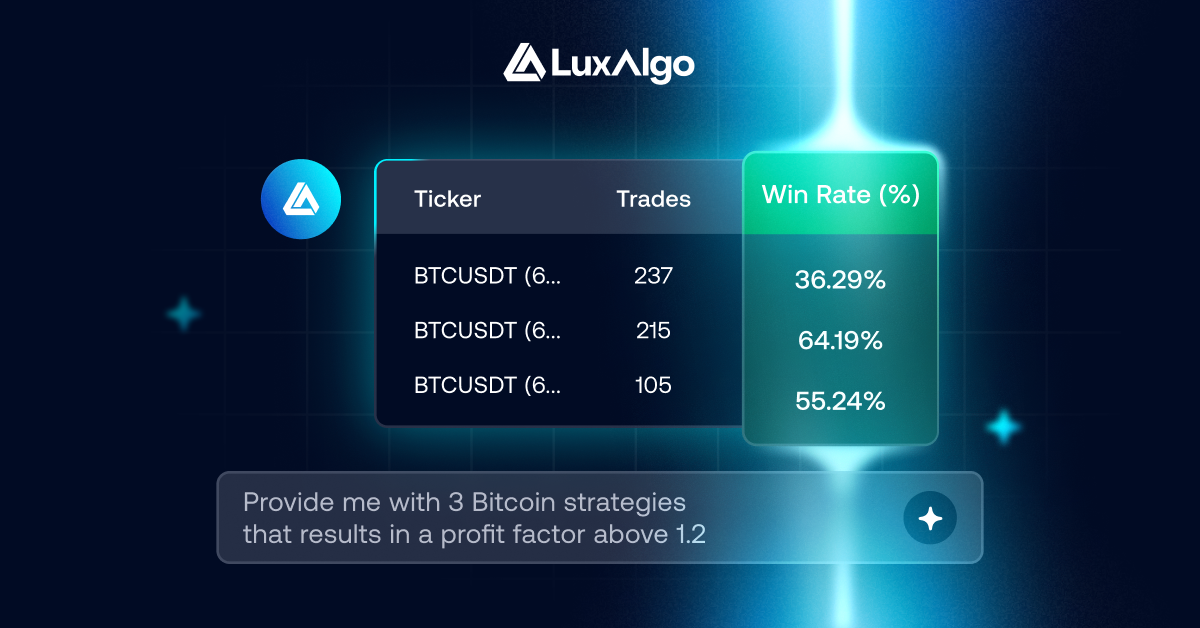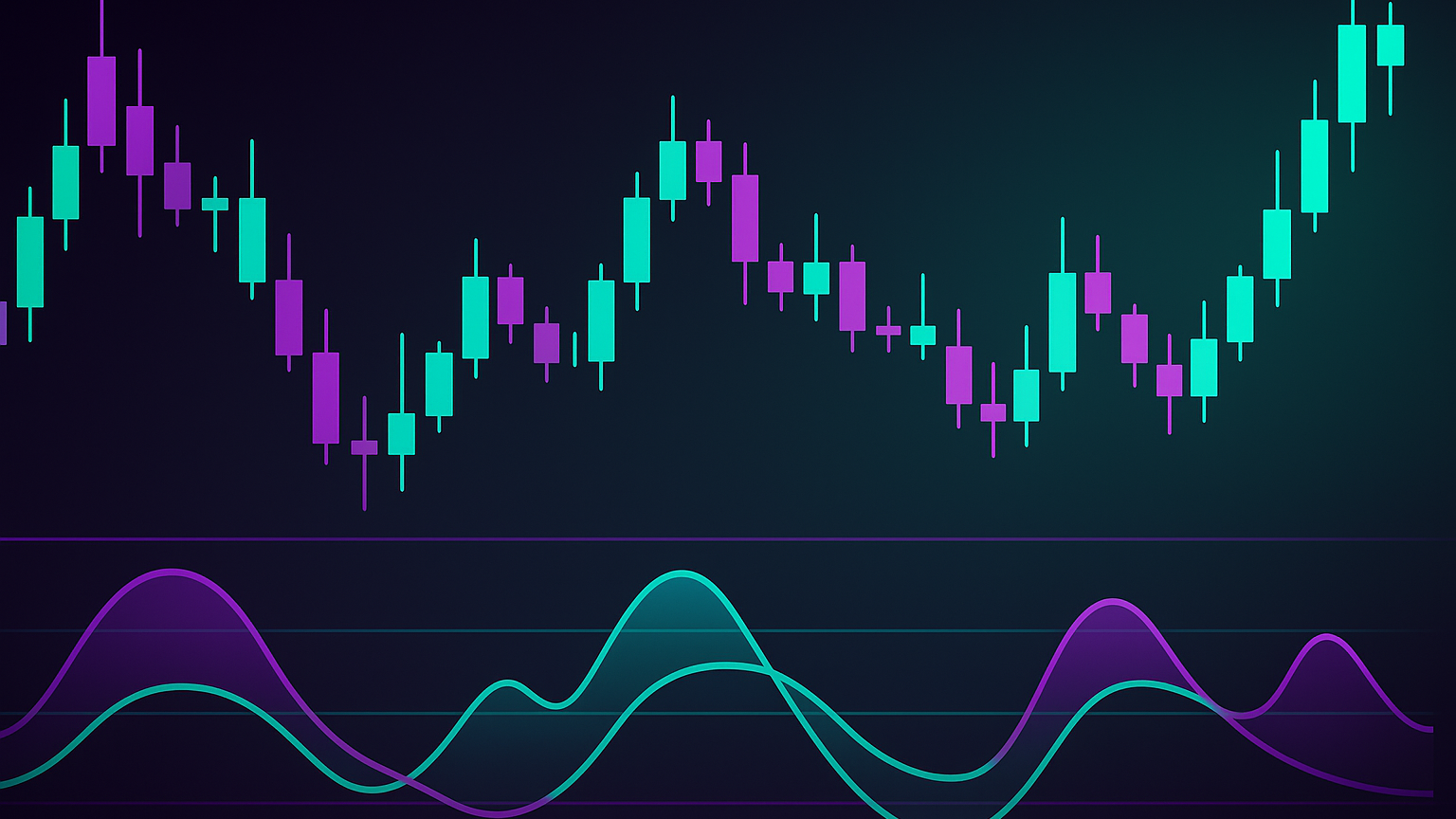Explore advanced candlestick patterns and trading strategies to enhance your market analysis and improve trading decisions.
- Key Patterns: Morning Star, Evening Star, Three Black Crows, and more.
- How to Use Them: Combine patterns with volume analysis, RSI, and moving averages.
- Risk Management: Set stop-loss levels based on specific patterns like Kicker or ATR %.
- Trading Tools: LuxAlgo’s Price Action Concepts (PAC) toolkit simplifies pattern detection, while the AI Backtesting Assistant streamlines strategy testing.
Quick Tip: Patterns work best in trending markets (70 % accuracy). Always confirm signals with volume and market context for better results.
Let’s dive into how these techniques can improve your trading decisions.
Best Candlestick Signals That Work Every Time
Major Candlestick Patterns
Advanced candlestick patterns play a key role in spotting potential market reversals and making smarter trading decisions. These patterns provide a window into market sentiment and can help predict price changes.
Reversal Patterns
Some of the most recognised reversal patterns include the Morning Star and Evening Star. The Morning Star shows up at the end of a down-trend and signals a bullish reversal with its three-candle formation.
“The Morning Star is a candlestick with a small body that forms at the bottom of the down-trend and signals an upward trend reversal.” – Alan Tsagaraev
On the flip side, the Evening Star appears at the peak of an up-trend, hinting at a bearish reversal. It’s made up of three candles: a long bullish candle, a small-bodied candle, and a long bearish candle.
| Pattern Type | Market Position | Signal Type | Key Characteristics |
|---|---|---|---|
| Morning Star | Bottom of Down-trend | Bullish Reversal | Three candles with a small-bodied middle |
| Evening Star | Top of Up-trend | Bearish Reversal | Three candles with a small-bodied middle |
More Complex Patterns
In addition to basic reversals, traders often analyse more intricate patterns like the Three Black Crows, a bearish reversal pattern. This formation becomes more reliable when paired with rising trading volume.
For example, in May 2018, a GBP/USD weekly chart showcased the Three Black Crows pattern, accurately predicting a down-trend. This was validated by three key elements:
- A sharp preceding upward trend
- Gradually shorter lower wicks across the candles
- A noticeably longer third candle
Recognising Patterns Effectively
To identify candlestick patterns effectively, follow these steps while considering the broader market environment:
- Use Higher Time-frames: Focus on time-frames like H1 and above for more dependable signals.
- Check Volume: Watch for increasing volume during the pattern, especially on the final candle.
- Assess Market Context: Ensure the pattern forms near important support or resistance levels.
For better risk control, stop-loss orders are essential. For Morning Star setups, place your stop below the second candle’s low. For Evening Star patterns, position your stop above the second candle’s high.
Market Context Analysis
To analyse candlestick patterns effectively, you need to consider the broader market environment. Understanding market dynamics is key to interpreting these patterns correctly.
Up vs. Down Market Signals
Candlestick patterns behave differently depending on whether the market is trending or consolidating. In consolidation phases, patterns are less reliable, with less than a 1.5 × chance of moving in a specific direction.
In up-trends, patterns like the Harami, Harami Cross, and Dragonfly can act as early indicators. These patterns often align with volume analysis to confirm potential movements.
Volume Analysis
Volume plays a key role in validating candlestick patterns, second only to price. Without volume confirmation, even strong-looking patterns can fail.
For instance, Tesla (TSLA) climbed above $750 on high trading volume. Over the next three days, volume dropped by half, signalling reduced supply and a continuation of the trend.
Technical Indicator Integration
Adding technical indicators alongside candlestick patterns can boost accuracy. For example, in IBM, a bearish RSI divergence followed by an Evening Star pattern led to a quick—and profitable—short trade.
Key tools include:
- Moving averages for confirming trends
- RSI for gauging momentum
- Stochastics to identify overbought or oversold conditions
This approach worked well with Southwestern Energy Company (SWN), where a bullish engulfing pattern combined with RSI divergences pointed to a bullish outcome.
Trading Methods with Candlesticks
This section explores strategies for timing trades and managing risks effectively using candlestick patterns.
Trade Timing
The key to trade timing is recognising fully formed patterns that indicate potential reversals or continuations. For example, island reversals require waiting for a price gap followed by a movement against that gap. Hook reversals, on the other hand, are confirmed when a down-trend is followed by two consecutive up days, with the price breaking above the previous high. The San-ku pattern often signals reversals after rapid price moves, as traders secure their profits. Proper entry timing not only improves trade execution but also lays the groundwork for effective risk management, as shown in the next section on stop-loss strategies.
Stop-Loss Methods
Stop-loss placement should align with the specific candlestick pattern you’re trading. For kicker patterns, set your stop-loss below the low of the kicker candle. This pattern reflects a decisive shift in market control, with one side driving a significant price change.
The ATR % stop method adjusts based on market volatility, offering a flexible alternative. For instance, in early 2006, GBP/USD day-traders using a 10 % ATR stop might have placed stops 11–14 pips from their entry price, while swing-traders using a 50 % ATR stop would allow 75–90 pips of movement. A good rule of thumb: position your stop-loss at the point where your initial trade idea becomes invalid.
These strategies build on earlier market analysis, turning technical signals into actionable trading plans.
LuxAlgo Tools Guide

Leveraging LuxAlgo’s Price Action Concepts (PAC) toolkit can enhance these trading strategies by simplifying pattern recognition and automating market-structure analysis. Meanwhile, the AI Backtesting Assistant allows traders to test strategies across different time-frames.
To maximise results, combine LuxAlgo’s pattern detection with the Custom Alert Creator inside the Signals & Overlays toolkit to pinpoint potential trades. LuxAlgo’s real-time analysis helps confirm patterns before you act.
Features that support candlestick trading include:
- Automated pattern detection for quicker signal identification
- Volumetric order blocks to spot key support and resistance levels
- Advanced market-structure analysis for deeper context
- Real-time alerts for completed patterns
These tools make it easier to align candlestick patterns with actionable trade opportunities.
Trading Examples
Let’s take a closer look at real-world trading scenarios to see how technical patterns and market context come together.
Winning Trade Analysis
In the USCRUDE market, a Morning Star candlestick pattern appeared after breaking an upper boundary. This signalled a potential reversal, and the following price movement confirmed the signal. Over the next 2–3 months, the price climbed by 80 %. This success was achieved by combining the candlestick pattern with additional technical confirmations.
In another example, GBP/USD traders using the H4 time-frame spotted multiple bullish engulfing and hammer patterns near a key support level. Those who entered long positions after the first engulfing pattern saw notable gains. Stop-loss orders were strategically placed to safeguard their positions.
These examples highlight how blending pattern recognition with proper risk management can lead to profitable outcomes.
Failed Trade Review
Not every trade works out, and ignoring broader market factors can result in losses.
For instance, a Bitcoin trader relied on a hammer pattern without considering the strong down-trend caused by regulatory concerns, leading to a loss. In another case, an Ethereum trade based on a bearish engulfing pattern failed because the trader overlooked positive market sentiment and adoption trends. These mistakes underscore the importance of aligning technical signals with the bigger market picture.
Practice Scenarios
Let’s explore a couple of practice setups to refine your approach:
- Apple Inc. Shares: The stock hit a key support zone at 22.40, forming a double bottom pattern. A bullish engulfing pattern confirmed the setup, suggesting an entry point around 24.00.
Key considerations:- Support level interaction (22.40)
- Confirmation through increased trading volume
- Profit target at 27.20
- Stop-loss at 23.20
- EUR/USD Setup: Multiple patterns aligned in the 1.0667–1.0635 buy zone, including a bullish engulfing pattern, two Morning Star formations, various hammer patterns, and a three white soldiers formation.
If trading this, think about:- Timing your entry
- Managing position size
- Setting targets at 1.0779, 1.0864, 1.0954, and 1.1007
These scenarios emphasise the importance of combining pattern analysis with market context and disciplined risk strategies for better trading outcomes.
Conclusion
Main Points
Candlestick patterns provide a visual way to understand market behaviour and price trends. Studies indicate that in trending markets, these patterns are about 70 % accurate in signalling continuations or reversals. Combining candlestick analysis with other technical tools can improve trading accuracy by 20–25 % across different markets and time-frames. This highlights the value of using multiple methods to make more reliable trading decisions.
“A revolutionary concept developed by Greg Morris in 1991, called candle-pattern filtering, provides a simple method to improve the overall reliability of candle patterns. While the short-term trend of the market must be identified before a candle pattern can exist, the determination of overbought and oversold markets using traditional technical analysis will enhance a candle pattern’s predictive ability. Concurrently, this technique helps eliminate bad or premature candle patterns.”
Key factors for effective candlestick analysis include:
- Using trend analysis tools to identify patterns
- Confirming signals with volume data
- Incorporating technical indicators like RSI, MACD, or Bollinger Bands
- Understanding market context to avoid false signals
- Applying strong risk management strategies
Getting Started
Ready to put these strategies into action? Begin by focusing on one advanced candlestick pattern at a time and trade with small positions while you practise. LuxAlgo’s Price Action Concepts toolkit simplifies pattern detection, and its dedicated screener helps you find promising setups across different time-frames. If you want deeper market insights, the Premium plan ($39.99 /mo) unlocks advanced signals, alerts, and the Oscillator Matrix toolkit.
“The game of speculation is the most uniformly fascinating game in the world. But it is not a game for the stupid, the mentally lazy, the person of inferior emotional balance, or the get-rich-quick adventurer.”
Start with demo accounts, keep detailed trading logs, and increase your position sizes gradually as your skills improve.








